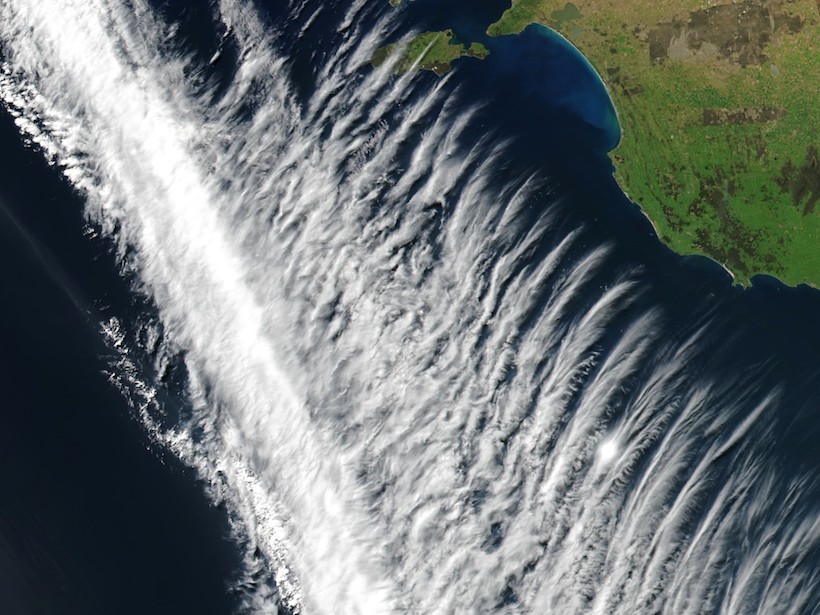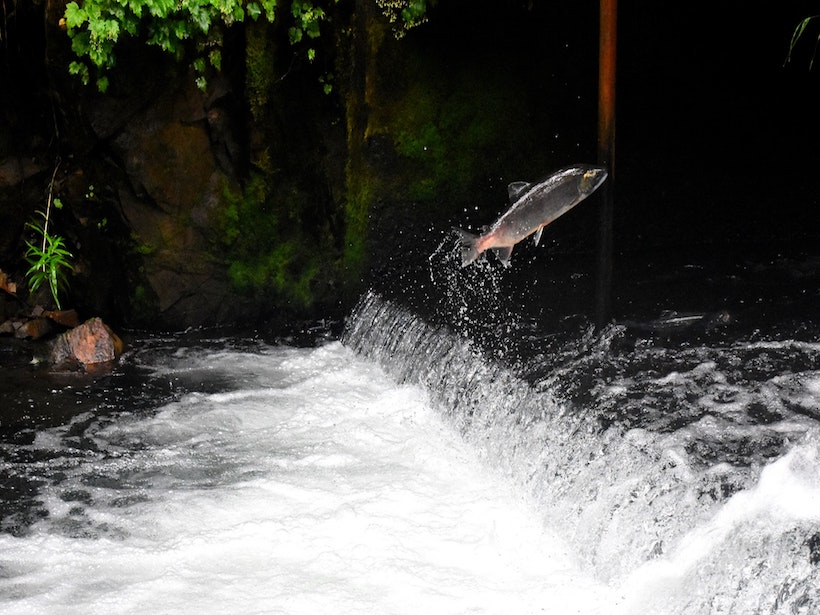Spacecraft observations and model simulations provide new insights into tidal patterns that transport momentum and energy into the planet’s upper atmosphere.
Research Spotlights
Research spotlights are plain-language summaries of recent articles published in AGU’s suite of 24 journals.
Terrestrial Radio Signals May Suppress High-Energy Electrons
Naval radio signals may cause the formation of a barrier observed during geomagnetic storms that is seemingly impenetrable by relativistic electrons.
Southern California’s Crustal Motion Tells of Earthquake Hazards
Precise measurements of the Earth’s vertical surface motion help to elucidate the hazards of faults in an earthquake-prone region.
Experimenting with Underwater Sediment Slides
Sediment-laden currents caused by breaching flow slides are hazardous to flood defenses and seabed infrastructure. New research shows that these phenomena must be accounted for in erosion simulations.
Ancient Ruins Reveal 8th Century Earthquake in Sea of Galilee
Research into past seismic activity shows northeast Israel is still vulnerable to large quakes.
Fibers Pick Up Silicon Valley Traffic Changes During Quarantine
Fiber-optic cables measured a 50% decline in Sand Hill Road traffic in March.
Successfully Simulating Atmospheric Gravity Waves
These waves are key to moving energy from the troposphere to the thermosphere, but until now they haven’t been well described at high altitudes in computer models.
A Clearer Look at Lunar Surface Hydration
Independent ground-based observations of the Moon confirm prior spacecraft observations that hydration at the lunar surface varies with temperature.
How River Capture Affects the Evolution of Aquatic Organisms
River basins are dynamic environments that are always changing and reorganizing under geologic forces. New research investigates how this shape shifting influences aquatic speciation and extinction.
Records and Risks of Legacy Phosphorus in Streams
A new study quantifies persistent phosphorus in a drainage basin in Sweden and points out risks and oversights to factor in to future stream management.










